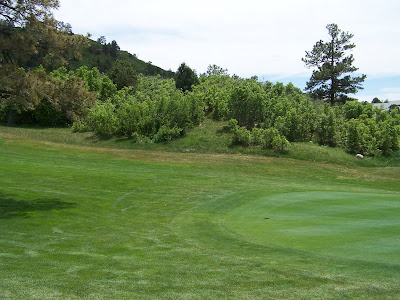I am not sure which is more difficult, the winter weather or the wildlife damage to the course each year. It seems as if every year we cannot escape winter without some sort of damage. This year with the winter weather being more mild than usual the course is beginning to come out of dormancy in good condition. The exception being the areas that were damaged by the Elk and Deer.
With a lack of snow cover for most of the winter the turf was exposed to the resident wildlife and they had a ball out on the course. Our biggest issues out on the course are the numerous areas of urine burn from the Deer and Elk. The areas in the fairways have already been seeded with Bentgrass and the areas on greens will have to be plugged out. The plugging on greens will not take place until after aerification due to the fact that the repaired areas might pull up from being aerified. This process will take several days to complete and then a couple of weeks for the repaired areas to blend in on the greens.
The hoove marks on the greens appear worse than they are, the damage that was caused is on the surface above the crown of the plant. The plant will regenerate new tissue and repair itself from this damage as soon as active turf growth begins to take place. During aerification additional seed will be applied to these areas to help with recovery.
Urine Burn on #10 Fairway
Urine Burn and Hoove marks on #7 Green


















